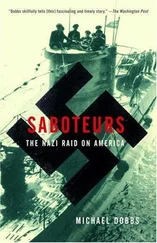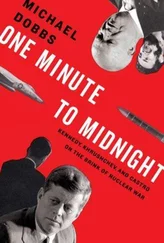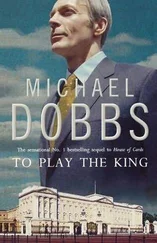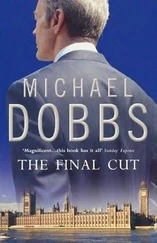Yakovlev went to see Gorbachev, who agreed with the plan. He instructed his staff to draft a speech that he could deliver to the Lithuanian parliament. By Tuesday, however, the president had once again changed his mind. “Some comrades are against the idea,” he told his aides, evidently referring to Kryuchkov. “They say it is impossible to guarantee the security of the president.” 39
Although Gorbachev refused to apologize for the use of force in Lithuania, he did put a brake on the machinery of repression. If everything had gone the way the hard-liners planned, presidential rule would have been declared in all three Baltic republics, and parliamentary activity suspended. The bloodshed in Vilnius, combined with the spectacle of tens of thousands of unarmed civilians taking to the streets to defend their parliaments and the outrage of the Russian intelligentsia, caused Gorbachev to reconsider his position. He would not permit his hard-line associates to push events to their logical conclusion.
The men who had gathered in Boldin’s office in the Kremlin drew their own conclusions from Gorbachev’s hesitation and prevarication. There was no point in restoring “socialist order” on the periphery of the empire if the center could not be relied upon. The script was fine, but it was necessary to make a few alterations. Next time they would begin at the center and proceed from there to the republics.
AS WINTER GAVE WAY to spring, the shock of the attempted coup in Lithuania began to fade. Ordinary Soviet citizens had other, more pressing matters on their minds, including the problem of finding enough to eat. The economy was in free fall. Shortages were spreading from one sector of industry and agriculture to another, creating a devastating ripple effect. In the past Soviet leaders might have been able to make up for the fall in production by increasing imports of grain and industrial goods. But the country’s foreign exchange reserves were practically exhausted. In the words of a government report, the world’s first socialist state was “on the verge of bankruptcy.” 40
The real mystery about the Soviet Union’s command economy is not that it collapsed when it did but that it managed to survive for so long. Economic power was concentrated in the hands of a small group of bureaucrats at the top of the pyramid. Even if these apparatchiks had been totally omniscient and supremely intelligent, it would still have been physically impossible for them to match the collective wisdom of the millions of individuals who form a Western-style “marketplace.” The Stalinist system of central planning could cope with grandiose tasks, like building nuclear bombs and producing thousands of tanks, because it was good at mobilizing resources to achieve a specific goal. The more complex the economy became, the more inefficient the system proved to be. The command economy lacked the myriad self-correcting mechanisms of a market economy. When a capitalist entrepreneur makes a wrong decision, he is quickly put right by millions of consumers; a similar error by a Soviet bureaucrat could go undetected for years, with horrendous consequences.
In the end there was only one self-correcting mechanism that mattered in a totalitarian state as powerful and self-sufficient as the Soviet Union: the country’s ability to support such a profligate and hopelessly inefficient system. Because Russia was a land of fabulous natural wealth, it took some time before this mechanism kicked into operation. As long as Kremlin leaders could export enough oil and natural gas to ensure Soviet citizens a basic standard of living and bankroll military adventures in the Third World, they had little incentive even to think about reform. It was no coincidence that Mikhail Gorbachev came to power just as the petrodollars were beginning to run out.
Even with a committed reformer occupying the post of general secretary, the system proved very resistant to change. Prior to 1991 there were hidden reserves that could be tapped to extend the life of the command economy by a few more months. When oil exports started to decline, there were still plentiful deposits of natural gas. When the gas industry began experiencing difficulties, the planners switched their attention to timber and precious metals. When all else failed, the Kremlin could always borrow money on international markets. The Soviet Union’s credit rating remained relatively high until 1990.
By 1991 it was no longer possible to disguise the gravity of the economic crisis. Oil exports had slumped by 50 percent since 1989 because of a decline in domestic production. After climbing slowly during the seventies and early eighties, the Soviet Union’s hard-currency debt had more than doubled under Gorbachev to $68 billion. 41Western bankers were reluctant to lend Moscow any more money, without firm guarantees of repayment. In a sign of financial desperation, Kremlin leaders now began authorizing massive sales of gold bullion to shore up the collapsing balance of payments. When the figures were published later that year, Western bankers were shocked to discover that the Soviet Union’s gold reserves had shrunk to 240 million metric tons, worth about $3 billion, a fraction of earlier estimates. 42
The myth of Soviet financial respectability had been shattered for good.
JUST BECAUSE THE ECONOMY WAS a shambles and ordinary Soviets had extraordinary difficulty making ends meet did not mean that it was impossible for enterprising, well-connected individuals to make a lot of money. In fact, the opposite was true. The greater the economic chaos and confusion, the greater the opportunities for personal enrichment. In a country that was increasingly out of touch with economic reality, someone with a firm grasp of the laws of supply and demand could become a millionaire overnight.
The simplest way of making a fortune was to find a way of purchasing goods and raw materials at artificially low Soviet prices and turn around and sell the same goods for much higher free market prices. The profit margin was often staggering. This was the trail blazed by the country’s first millionaire, Artyom Tarasov, one subsequently followed by the vast majority of successful Soviet businessmen. Tarasov, an engineer working for the Moscow City Council, devised a method for turning Soviet junk into American dollars. He scoured Russia for scrap metal, which he purchased with rubles at dirt-cheap prices. He exported the metal to Western countries and used the proceeds to purchase personal computers, which he was able to resell in Russia for a huge profit. Business soared.
By the end of 1990 Tarasov had moved on to the even more lucrative oil trade. He persuaded the newly appointed Russian government to grant his company, Istok, a license for the export of several million barrels of Russian oil. He was able to purchase the oil for the ruble equivalent to eighty-five cents a barrel and sell it abroad for around twenty dollars a barrel in hard currency. These transactions yielded millions of dollars in profits. Under the terms of Tarasov’s agreement with the Russian authorities, Istok was permitted to keep the funds in a French bank account. There was one, very important caveat, however. The entire hard-currency proceeds of the sale would be used to purchase consumer goods that had already been promised to Russian farmers, under an incentive scheme known as Harvest ’90. 43
At the beginning of April 1991 came news that Tarasov and his principal business partner had fled the country. The money earmarked for Harvest ’90 had vanished from the French bank account. The Russian farmers had lost out once again. According to Russian investigators, the only benefit the farmers ever derived from an import-export deal designed to offer them new hope was several thousand pairs of defective rubber boots. The state prosecutor’s office accused Tarasov of “misappropriation” and “breach of trust,” but failed to bring formal charges because of the statute of limitations. 44Tarasov maintained his innocence all along and refused to cooperate with the investigation, saying that it was inspired by his political enemies.
Читать дальше












